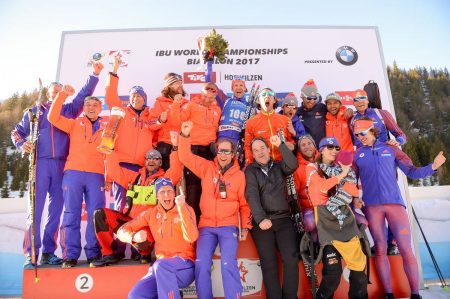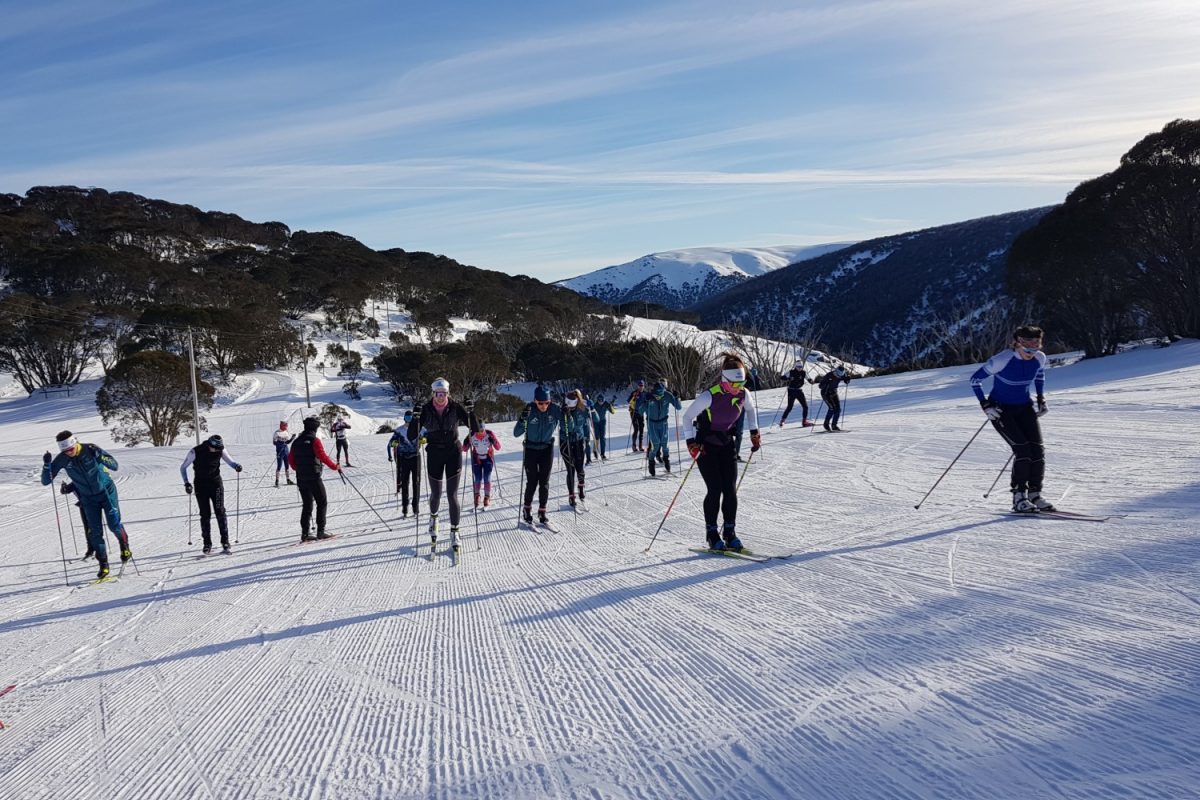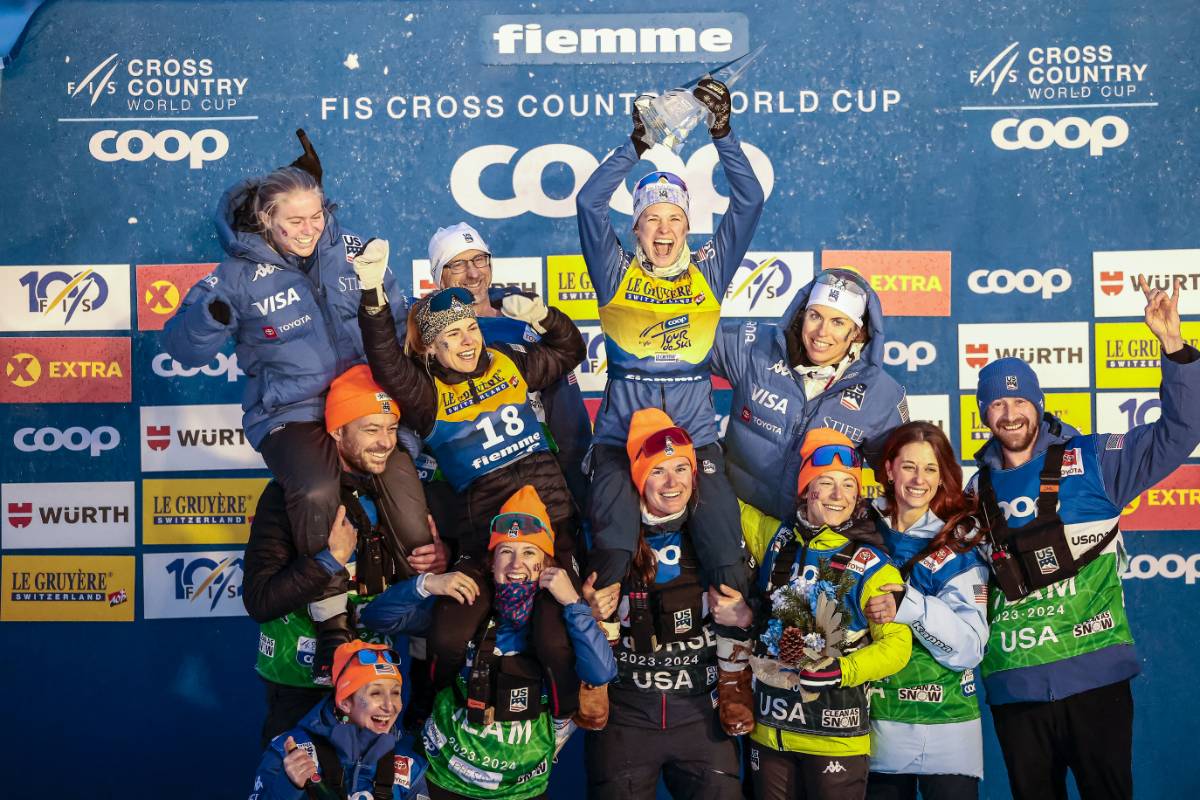This article is Part One of an interview with Lowell Bailey who represented the United States in biathlon in four Olympic games, 11 World Championships, and 15 World Cup seasons. He is currently Director of High Performance for U.S. Biathlon. His World Championship gold medal race remains one of the most thrilling races ever. The race is available on YouTube, ( https://www.youtube.com/watch?v=yguD6SEAAmw) and is a great watch. His enthusiasm for biathlon continues, and is contagious.
This interview has been edited for clarity and brevity.

You’re Director of High Performance for U.S. Biathlon. What does that job entail?
I maintain programing for our athletes at all levels. That includes World Cup, IBU (International Biathlon Union) Cup, and the National team, and all the resources that go into athlete support. It covers staffing, logistics, and managing coaches. Things like how do you get teams from the U.S. to Europe to compete on international circuits.
The most exciting part is strategizing about how we as a country can improve. It includes long range planning for U.S. Biathlon. It’s very analogous to any CEO position. I look at what our strengths and weaknesses are, and where are our advantages. We look at other sports and what they do well and gain information from that.
We are at the highest level of competition and the margins are very small. We ask how do you get the final fraction of percentage which puts you on the podium? How are we going to move things up one notch? We’re constantly looking for fresh perspectives. We can tend to be myopic. There’s a lot to be gained by looking outside of your comfort zone. I don’t want to give away any secrets, but we’ve learned a lot from U.S. speed skating with their approach to innovations. We don’t just look at biathlon, but we look at other sports as well to learn from their approaches.
What does summer training traditionally look like for the team?
We generally have camps which last two to three weeks and happen almost every month of the training year, which is broken up by athletes training at home. We manage the entire year for the athletes, 365 days.
What does a typical plan look like?
There really is no such thing. Training plans are always changing and are a result of dialogue between athletes and coaches. Each athlete needs different things, and we work to tailor training to those needs. We are always looking at where we’ve been and how we get better. The best coaches help athletes clarify what comes out of the athlete’s self-reflection. It’s the coach’s job to say whether goals are achievable, and here’s the changes to the plan to achieve those goals.
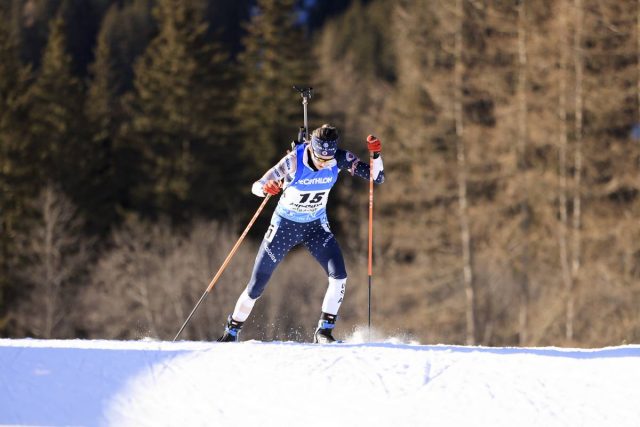
Are you satisfied with the way summer training has gone? What’s changed in summer training?
Yes, I am satisfied. One of the biggest changes has been the reassessment of goals for the next eight years. We have the singular goal of a U.S. athlete stepping onto the podium, what will it take to get us there, and keep us there. This analysis resulted in a very specific plan to focus on the areas that will have the biggest impact on those goals. Those include focusing on looking at development pipeline for improvement. That’s been one of the biggest changes.
Coming out of the last two years so much of our work was just keeping the team going during the middle of a pandemic. So, this is a big change.
The race season starts in a couple of weeks. What do preparations look like now? What’s it like to make the transition from summer training to the beginning of the season?
We have staff on the ground in Europe throughout the summer testing skis and wax. So, preparations have begun well in advance of now. Most of our testing is based in Europe since that’s where the ski companies and snow tunnels are. For staff that does ski preparation, they tend to be European based, and that works well for us. When the skiers travel, staff travels with them. We have a big staff that goes with the athletes that manages logistics, travel plans, hotels, skis, and anything else we can to support athletes. Preparation for getting an athlete to the start line in December starts in April.
We’ve finished our last dryland camp in Utah, which was very intense. We head to Finland on the 12th of November for final preparations and a final two week camp on snow. Right now it’s basically a matter of tweaking things; you’re just putting the icing on the cake. Most of the hard training blocks are done. There’s only so much which can be done in two weeks. A lot of the next couple of weeks will be getting used to being back on snow. Most of our athletes had one week on snow in September. Other than that, they’ve been on roller skis for the last six to eight months.
The team has had some big changes from last year: Susan Dunklee, Clare Egan, and Leif Nordgren have retired. How do you fill that void?
It’s a big void to fill. But, we’re in a very good place now with new leadership. Every team has ebbs and flows as veterans retire and younger athletes take their place, that’s natural. We have an experienced team. We do try to intentionally manage team leadership, but it also has to develop organically. You definitely have both an organic and intentional process. It’s our job to manage that process to get the best team culture. I commend the athletes for working through the transition and honoring the athlete leaders they looked up to for years. We have a really good mix of experience levels. Our continuity of leadership is in a good place and a lot of that is due to the job our prior athlete leadership has done.
Deedra Irwin had a fantastic result in Beijng finishing seventh in the 15 kilometer individual. Does that bring with it the pressure of high expectations?
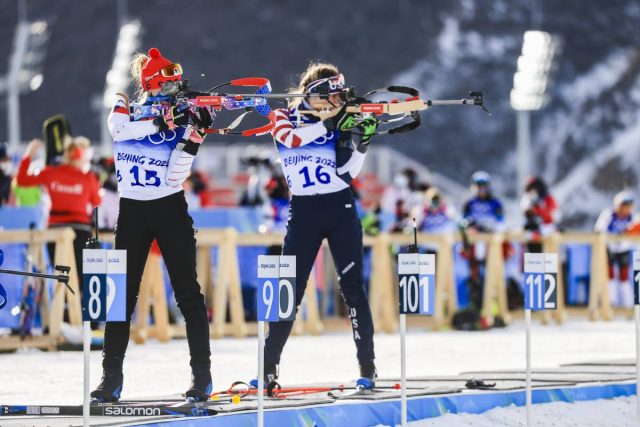
I’ll answer it this way; it does set up internal expectations. I mean that in the sense that an athlete now knows what it takes to make it to the top. The expectation from the athlete internally changes: “I know now what it takes to be seventh place at the Olympics.” It reframes the approach and the mindset. It also changes coaches’ expectations in the sense that they need to know the athlete and whether the athlete thrives under this type of pressure, or whether the athlete needs to downplay those results and not make it the focus. The sports psychologists and everyone around the coach needs to understand these differences. Everyone supporting the athlete needs to know which cue words to say and which cue words to avoid. These are things that an athlete needs to succeed. So, it’s not pressure in the sense you mean.

During Covid racing there weren’t fans at the venues. It was strangely silent. Was that difficult for the athletes, and do you now have to retrain athletes to get them used to shooting during fan noise?
What happened with the crowds was unprecedented. We have traditionally had 20,000-30,000 at a venue. Dealing with it varies athlete to athlete. Some athletes thrive on the crowd noise. Others just focus on what can I do on a given day to be at my best. We do use various forms of distraction during training to account for this. Sometimes it’s as simple as loud noise. Sometimes it’s a singular voice which is the most distracting. We practice things such as coming into the range for the final shooting round and putting the athlete in a situation where we simulate that they are leading a high stakes race. We train athletes how to regain focus in moments of distraction whether that’s crowd noise or race pressure. The athlete who can still focus on the fundamentals and adapt to those scenarios will come out in a better position. That’s the secret to success. Being able to refocus in the moment.
Thoughts on the World Championships in Oberhof, Germany? Expectations of an American being on the podium?
We’re ready. We know the venue really well. I’m optimistic that we can see podiums. Any given day, any athlete can make it. We’ve shown podiums are within reach. Everyone wants World Championship podiums, so they are hard to come by! Of course World Championships are the focus, but something to remember though is that every World cup race is just as competitive as World Championships because of the limited number of spots for different squads. So, in a sense, stepping on a World Cup podium is just as important as stepping on a World Championship podium.
How’s the ban on Russian athletes affecting what we see in competition? Any sense how the participating athletes feel?
I’m not sure. When the invasion first happened, it appeared there was overwhelming support to rally behind the Ukrainian’s cause. The IBU has made their decision. We need to see how that affects the World Cup. I can’t really comment on how current athletes’ feel. If I were still competing, I’d have a mix of emotions. There’s no universally right answer.
FasterSkier will continue its interview with Lowell Bailey in Part Two, including how support for Team U.S.A. compares to other countries, dealing with a long race season, fluoro bans, and the legacy of Mr. Bailey’s World Championship gold medal race.
